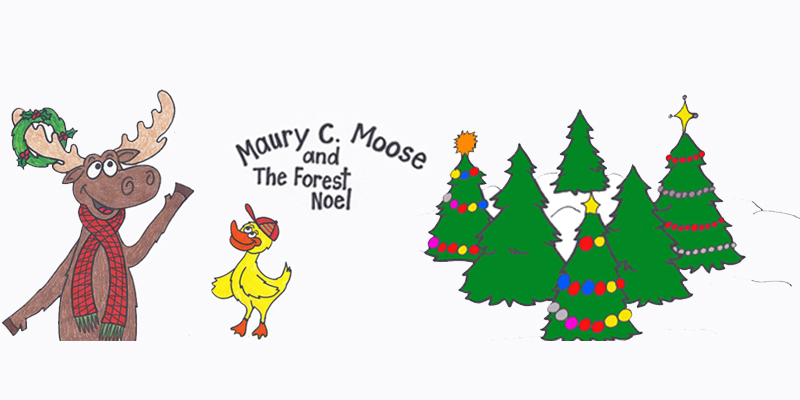Last week I was fortunate enough to be able to speak with the Phoenix West Rotary Club. I had the opportunity to share the story of how my children’s book came to life.
I thought you all might like to see speech I gave to the Rotary Club…enjoy!
For 23 years, the TV series Reading Rainbow captured the attention of young people across the world. From 1983 to 2006 the Emmy award winning show, led by actor LeVar Burton, helped millions of kids create a love for reading.
Eight years ago the show was told it had run its course. PBS no longer had room for the program on its schedule.
After a brief hiatus, Burton felt there was still room for Reading Rainbow in the homes and hearts of young readers. However, he decided the format was not just for TV anymore, he wanted to expand the program across many platforms.
Burton had a vision of making Reading Rainbow accessible at your fingertips 24/7. He wanted kids be able to get the material on their iPads, computers and smartphones. He wanted classrooms everywhere to have access to all the content the program created during its successful 23-year run.
The vision was there, but a very important element was not.
In order to make this dream a reality, Burton was going to have to come up with $1 million. No small task, even for a guy that was on Star Trek.
How was Burton going to get the funding to make this dream possible?
About a year ago I asked myself a similar question.
I had written a children’s book about a Moose named Maury. It was a fun Christmas story filled with puns and rhymes. The book was written for early readers but I had a bigger goal in mind.
I had read a survey, conducted by Harris Interactive, which found that only one in three parents read bedtime stories with their children every night, and 50 percent of parents say their kids spend more time with TV or video games than with books.
My goal was to create a book that offered something for the entire family. I wanted my story to encourage families to gather around reading instead of the TV. My book was written for ages 5-10 but much like popular animated movies, I mixed in adult humor with childhood whimsy to create a story that kids and parents could love reading together.
My book was finished and Maury was ready to come to life. Only one problem.
Much like Reading Rainbow, in order to get my message out to the world I was going to have to find some money.
I didn’t have to come up with $1 million, like Burton, but I knew that in order to create my book and do it right I was going to need some help.
Around that time, I had read a great book by Adam Grant titled Give & Take. The book’s premise was that some people are givers. Grant portrayed a group of givers by explaining that there are sites out there where people can give you money to help you get a project off the ground.
I was someone who was looking to get a project off the ground. Was there really a site where people would give me funding to help me achieve my goal?
It seemed too good to be true.
After some research, I learned that these sites do exist and they are an online financing strategy known as crowdfunding.
I did not know a lot about crowdfunding but I saw it as an opportunity to get the help I needed to bring my book to life.
Thanks to the help of a friend, I created this video.
My campaign launched on September 23rd with the goal of raising $5,000. Within two weeks I hit my goal! With the help of 89 amazing people I ended up raising $5,725 over the course of my 30 day campaign.
Fast forward a few months and my book came to life. Here it is.
So what exactly is this thing called crowdfunding?
Crowdfunding has been described as the intersection of money and dreams.
As the name suggests, it is a way of collecting financing from backers, or a “crowd” to “fund” an initiative. The initiative can be anything from a book project like mine to a non-profit looking to raise money to send children with cancer to summer camp.
In 2013 crowdfunding helped companies and individuals raise an estimated $5 billion dollars.
So how does it work?
The first step is to choose a crowdfunding platform online. This is where you will present your project and use anything you can to attract funds from your audience.
The two most popular crowdfunding platforms right now are Kickstarter and Indiegogo. I chose Kickstarter for my book.
Once you pick your site, you then have to tell your story. You set up your campaign, outlining your project, covering things such as how much money you are looking to raise, what you will do with the money and why people should join your initiative.
The video I showed was the introduction to my project. It gave background on who I am, what I am doing and why I need help.
In order to entice people to donate, you can offer rewards. I offered everything from temporary tattoos to a chance to meet me for lunch and write a Christmas poem together.
Before you are ready to launch your project you must decide how long your campaign will last. This sets a countdown clock to show how much time you have to receive funding.
Next comes the most important and also the scariest part. You have to ask people for help.
In a culture that often finds it taboo to personally ask for money, crowdfunding does just that.
Because you are not really selling something, you have to get over the fear of asking for money.
Sure I offered my book as a reward to contributing to my project, but it was still hard to ask family, friends and strangers for money.
One thing I learned is that there are a lot of great people out there who are looking to help. And not only do people want to help, but they want to contribute to something they feel will be successful.
80% of Kickstarter campaigns that hit at least 20% of their goal go on to be fully funded.
This is similar to why people want to vote for a candidate they think is going to win an election. People want to be connected to a winner. Once your project looks like it will be a winner, you really start to gain traction.
You may be thinking all this is great but what does it have to do with us?
How can the Phoenix West Rotary Club use crowdfunding?
As I mentioned earlier, crowdfunding helped companies and individuals raise over $5 billion in 2013 and the industry is continuing to skyrocket. This industry isn’t just for people with a book about a moose. It is for everyone.
You might have crowdfunding ideas for each of your individual businesses, but what about bringing those ideas together for the Rotary Club.
By pooling the audience from each of your companies, I think Rotary could put together a very successful crowdfunding campaign.
See, crowdfunding does not build you an audience. But it does help bring your audience closer together.
When I started my Kickstarter campaign I did not have a huge audience. But what I learned is that the audience I did have really came together thanks to my project. I went from having a small group of people who knew about my book, to having 89 really passionate fans who literally gave me money from their pocket to see me succeed.
The key thing is developing a project that speaks to your audience about who you are. You have to pick the right project. You probably wouldn’t want to raise money to create a calendar featuring “Men of The Rotary Club.”
You have to decide what your audience can get behind. I’ve heard that the rotary club is involved with the Ronald McDonald House. One option could be to use crowdfunding as a resource to raise funds and awareness for their Adopt A Room program.
One charity I am very involved with is the Phoenix Children’s Hospital. Every year they hold a camp in Prescott for children with cancer. The camp is called Camp Rainbow and it does not cost the patients a dime to attend.
As you can imagine this can get expensive. This year, PCH decided to launch a crowdfunding campaign through Indigogo to help raise money for Camp Rainbow. Thanks to a very generous audience, I am happy to say that their project raised over $12,000. Tomorrow I leave to volunteer at Camp Rainbow and that opportunity might not have been available if it wasn’t for the help of crowdfunding.
One person who has now become a huge fan of crowdfunding is LeVar Burton.
As I mentioned at the open of this talk, Burton had the difficult task of raising $1 million for Reading Rainbow.
As you can probably guess by now, Burton turned to crowdfunding to help attain financing.
Thanks to an awesome fan base along with many celebrity endorsers, Reading Rainbow kicked butt with their Kickstarter campaign. They achieved their goal in less than 12 hours! When the dust settled on their 30 day campaign they had raised 6 times their goal, finishing with $6.4 million.
Their tremendous success will allow them to spread the joy of reading to kids across the world.
And who knows, maybe one day they will make an episode about a moose named Maury!




